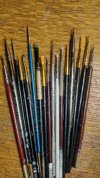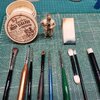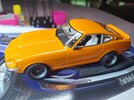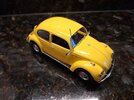Plastic Pilot
Member
- Joined
- May 25, 2024
- Messages
- 75
Hello,
I have a few brushes in my workshop/office, but the vast majority are for miniature painting and are useless for modeling, and I'm wondering what brushes to buy for static modelism.
I searched the web and found a big variety of sizes and materials, but I don't know what purpose has each of them, I guess the flat ones are for big areas, the angled are for corners and places hard to reach and the round ones are for detailing. The only brushes suited for modelism that I have, are the ones in the picture, I have another ones that are disposable ore something, the typical brush that comes with a starter kit and I's a pain to work with them.
Please, if you will, give me some advice on what to buy and what dose the brush do, I refer to the purpose of the brush: for base coating, details, dry brush, weathering and other effects.
Thanks and have a nice day.
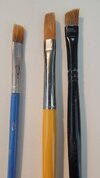
I have a few brushes in my workshop/office, but the vast majority are for miniature painting and are useless for modeling, and I'm wondering what brushes to buy for static modelism.
I searched the web and found a big variety of sizes and materials, but I don't know what purpose has each of them, I guess the flat ones are for big areas, the angled are for corners and places hard to reach and the round ones are for detailing. The only brushes suited for modelism that I have, are the ones in the picture, I have another ones that are disposable ore something, the typical brush that comes with a starter kit and I's a pain to work with them.
Please, if you will, give me some advice on what to buy and what dose the brush do, I refer to the purpose of the brush: for base coating, details, dry brush, weathering and other effects.
Thanks and have a nice day.


